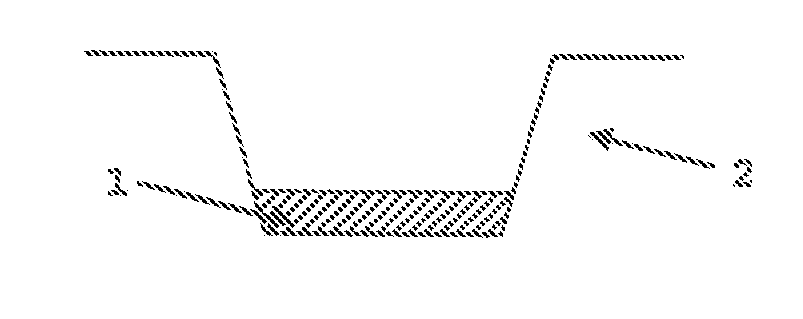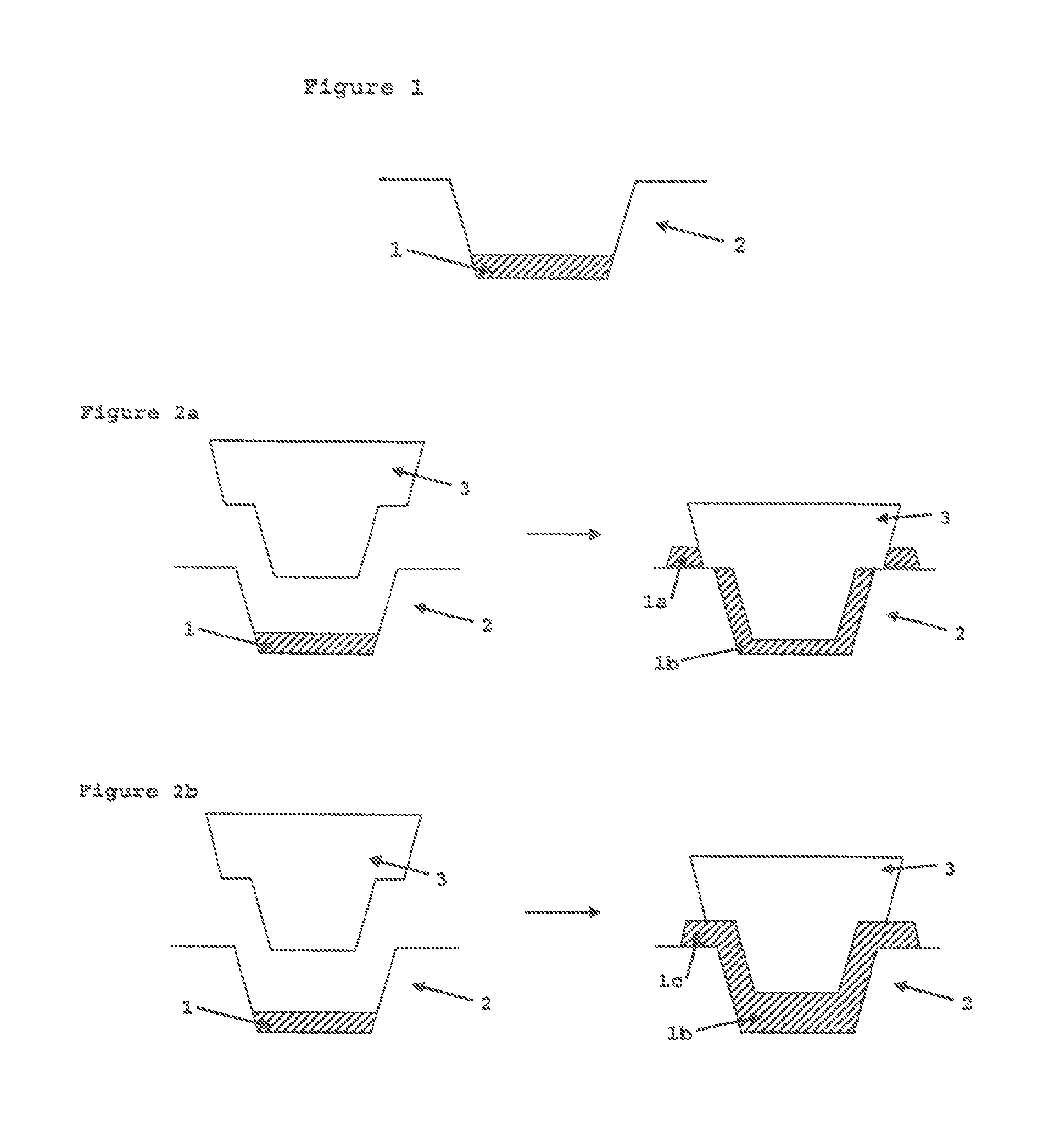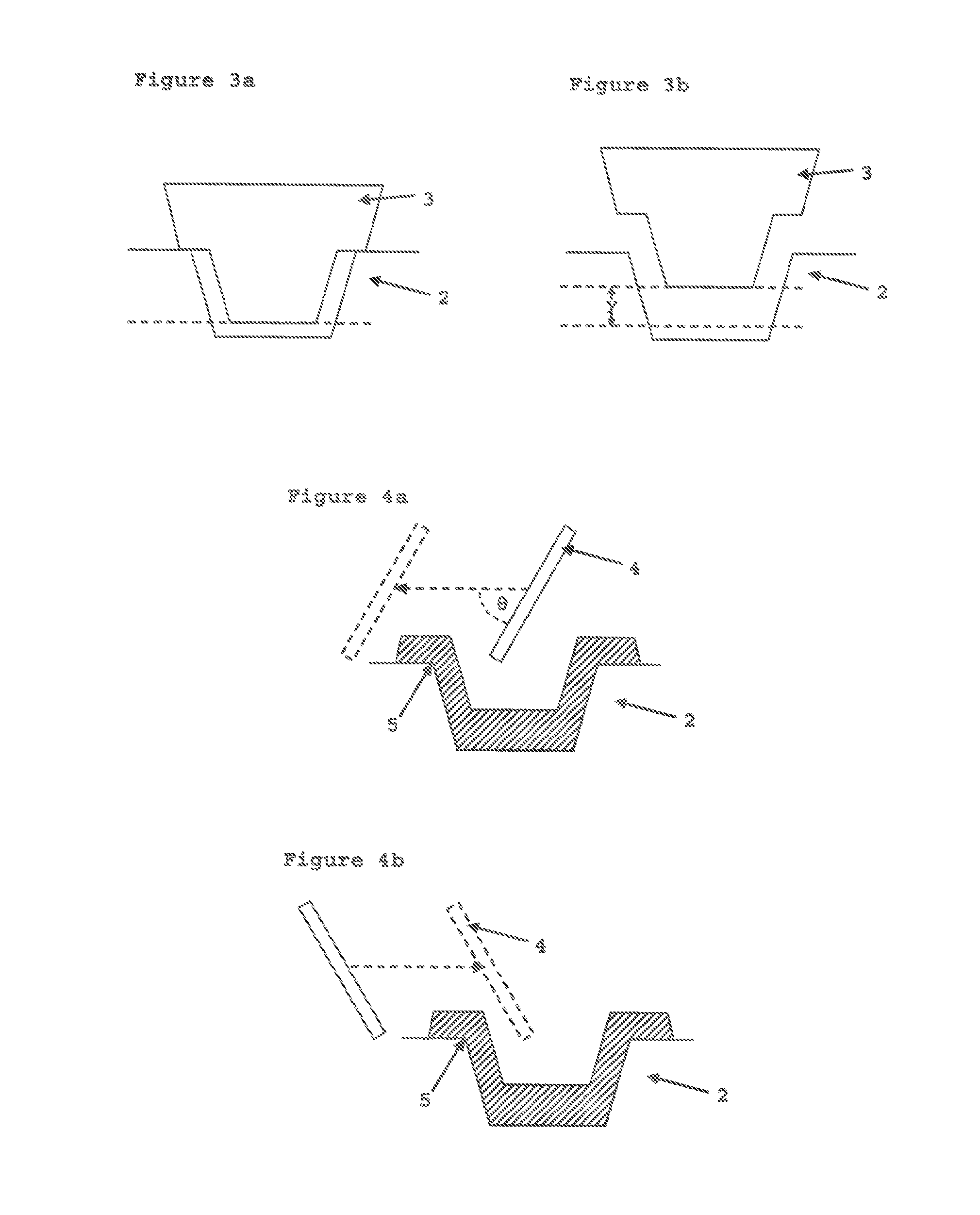Method for manufacturing a confectionery shell
a manufacturing method and confectionery shell technology, applied in confectionery, cocoa, food shaping and other directions, can solve the problems of inability to accurately stamp and mold, excessive material collection and treatment, and difficulty in achieving the effect of reducing time delays caused by reconfiguring confectionery shell-producing machinery, saving time and reducing product quality
- Summary
- Abstract
- Description
- Claims
- Application Information
AI Technical Summary
Benefits of technology
Problems solved by technology
Method used
Image
Examples
example 1
[0074]Example 1 was conducted in the same manner as Comparative Example 2 except that the scraping step comprised two scraping actions. One scraping action was made from the middle of the mould cavity along the long sides and outwards over one of the short sides (i.e. motion ‘b’ in FIG. 6b) and one scraping action from the middle of the mould cavity along the long sides and outwards over the other short side (i.e. motion ‘c’ in FIG. 6b).
example 2
[0075]Example 2 was conducted in the same manner as Comparative Example 2 except that the scraping step comprised four scraping actions. The four scraping actions were made from the middle of the mould cavity outwardly across each of the four sides of the mould cavity (i.e. motions ‘b’ and ‘c’ in FIG. 6b and motions ‘d’ and ‘e’ in FIG. 6c).
[0076]Certain aspects of Comparative Examples 1 and 2 and Examples 1 and 2 are shown in Table 1 below.
TABLE 1Example / Stamp FinishShellScraping ParametersComp.Position (y)ThicknessNo. ofExample[mm][mm]ScrapesDirectionComp.0.01.11OutsideEx. 1Comp.0.31.41OutsideEx. 2Ex. 10.31.42Inside toshort sidesEx. 20.31.44Inside toall sides
[0077]Visual inspection of the de-moulded confections is summarised below.
TABLE 2Example / Comp. Ex.ResultCommentsComp.Bottom free ofBenchmark qualityEx. 1defectsComp.Defects along allUnacceptable qualityEx. 2bottom sidesEx. 1Minor slide defectsSimilar quality to Comp. Ex. 1.along long sidesEx. 2Bottom free ofProduct quality judg...
example 3
[0080]Tempered Milka® white chocolate mass (100±1.5 g, manufactured by Kraft Foods) at a temperature of 28.5° C. and six Smarties® (manufactured by Nestlé) were manually deposited into cavities in a stamp mould (Brunner-Glonn, Germany). The mould was previously stored in a heating cabinet for 2 days at 28.5° C. The mould was then vibrated for 30 seconds using a Knobel VT DUO / H shaking table (z Freq.: 100 Hz; y Freq.: 100 Hz; y Ampl.: 3 mm).
[0081]The mixture was pressed in the mould cavities using a Knobel® Cold Stamp unit (CP Standard Cold Press 07-KCM-09, Knobel, Felben CH). The immersion period was set to 7 seconds, the surface of the stamps was −6° C. and the stamp speed was 60 mm s−1. The stamps were halted 4.5 mm short of the maximum pressing position (i.e. y=4.5 mm in FIG. 3b).
[0082]The stamps were withdrawn from the mould cavities and the mould was stored at ambient temperature for 5 minutes before excess material extending outside the cavity was removed by two scraping motio...
PUM
 Login to View More
Login to View More Abstract
Description
Claims
Application Information
 Login to View More
Login to View More - R&D
- Intellectual Property
- Life Sciences
- Materials
- Tech Scout
- Unparalleled Data Quality
- Higher Quality Content
- 60% Fewer Hallucinations
Browse by: Latest US Patents, China's latest patents, Technical Efficacy Thesaurus, Application Domain, Technology Topic, Popular Technical Reports.
© 2025 PatSnap. All rights reserved.Legal|Privacy policy|Modern Slavery Act Transparency Statement|Sitemap|About US| Contact US: help@patsnap.com



